Sorry, Astronomers: Practically All Of The Universe’s Matter Is Still Missing
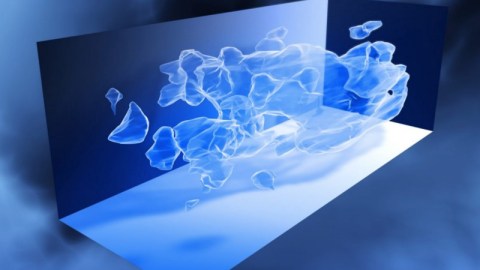
They said the “missing half” of the Universe’s matter was just found. But what they found barely makes a dent to the big picture.
When we look up into the great abyss of the Universe, we’re greeted by an enormous suite of stars, galaxies, and nebulae that both emit and absorb light. Based on everything we observe and detect, we can add up all that we discover through the science of astronomy, and find out how much it all weighs. That gives us a number: how much matter there is in the Universe that we presently understand.
But we have another method we can use instead that’s completely independent. By observing how matter and light move, or are altered, by the influence of gravity, we can measure the total amount of mass in the Universe. If we can get those to numbers to match, we’ll finally understand where all the matter in the Universe comes from. Not only can’t we, but 85% of it is still unaccounted for. Despite recent reports that we’ve found the Universe’s missing matter, it was only a tiny fraction of what we need. Here’s the full story.
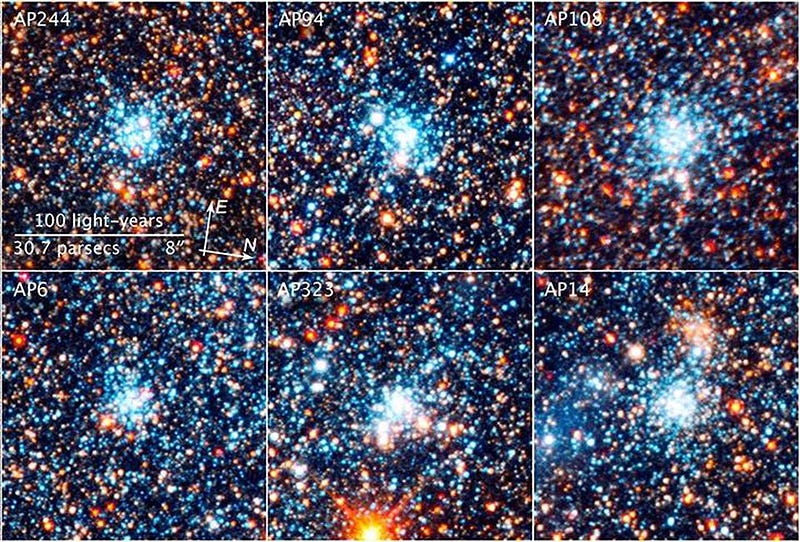
The idea of missing matter goes all the way back to the 1930s. By that point, we understood how stars (such as our Sun) worked well enough that if we could measure the light coming from them, we could infer how massive they were. This worked not only for individual stars, but for large collections of stars, too. By applying what we know about stars to the light from distant galaxies, we could get an estimate for how much matter there is in one well-understood type of object: stars.
We could also measure how these galaxies moved within the larger structure that they’re all a part of: a galaxy cluster. Because we know how gravitation works, measuring the motions of these galaxies teaches us what the total mass of the cluster has to be to give them stable orbits.
The big problem? The second number wasn’t just bigger than the first, but it was 160 times as large!
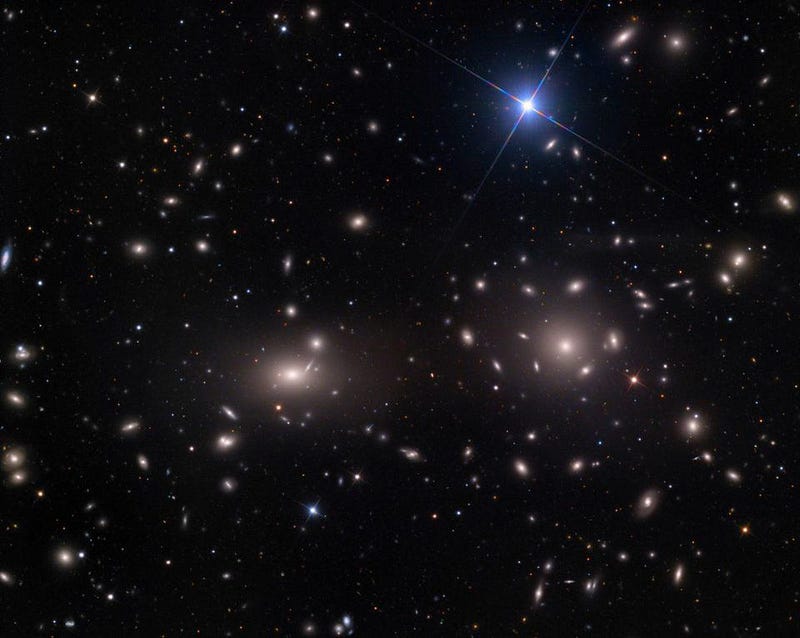
For a long time, astronomers refused to accept this as a meaningful discovery. There were many objections raised, some valid and some not so valid.
- Maybe you’re only seeing the brightest stars, but the fainter ones have most of the mass.
- Maybe most of the matter isn’t in stars, but consists of smaller, non-luminous clumps: planets, gas, dust, and perhaps even black holes.
- Or maybe we don’t understand stars and solar systems as well as we think we do, and we’ve simply calculated the “mass in stars” incorrectly.
As the years and decades went by, we learned a lot about what we both were and weren’t seeing. The stars we see in other galaxies aren’t dominated by stars like our Sun, but rather by more massive, luminous, and (generally) bluer stars: the mismatch was more like 50-to-1 than 160-to-1. In addition, there really was a lot of dust and gas in these galaxies, which X-ray emitting galaxies and clusters truly helped reveal.
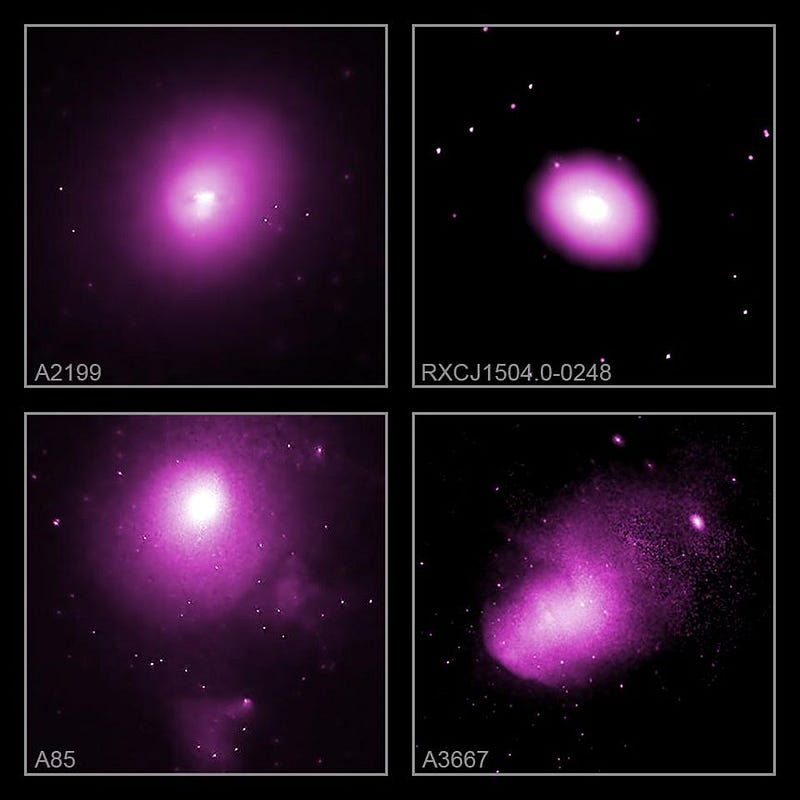
In addition to that, there’s also evidence for matter — normal matter, made of protons, neutrons and electrons — existing in the space between galaxies and galaxy clusters: the warm-hot intergalactic medium. This ionized plasma has been very difficult to detect, but has long been thought to exist in large quantities, making up significantly more mass than all the stars in the Universe combined.
Recently, to the highest precision ever, this sought-after matter has been detected as pulses of light known as fast radio bursts travel through them on their way to Earth. This is the “missing matter” that’s finally been discovered, as reported in numerous outlets over the past week or two. It’s an extremely important discovery for astrophysics, but it doesn’t come close to solving the problem of what or where the actual “missing mass” in the Universe actually is.

When you add up all the sources of matter that we have, know, and can identify, we find that:
- black holes, planets, and dust make up significantly less that 1% of the total mass,
- stars contribute about 1–2% of the total mass,
- neutral gas, including gas found within galaxies, makes up about 5–6% of the total mass,
- and the ionized plasma in the warm-hot intergalactic medium makes up about another 7–8% of the total mass.
Add up everything we understand, and we finally come out to about 15% of the total. That’s great, but it’s nowhere close to 100%.
And we knew it couldn’t be. All of this “missing matter” is normal, regular, proton/neutron/electron-based matter: the same building blocks that we’re made out of. But even before we discovered it, we already knew, without a doubt, how much normal matter needed to be out there.

That’s because one of the things we’ve been able to do is measure, from very pristine clouds of gas that have never (or only rarely) formed stars, which elements were present (and in what ratios) in the aftermath of the Big Bang. These “primordial abundances” teach us how protons and neutrons fused together to make the lightest elements in the Universe at extremely early times: before any stars had ever formed.
Because nuclear physics is now very well-understood, and we know about the presence of both radiation and neutrinos in the early Universe, measuring the abundances of these light elements teaches us how many baryons — i.e., how much total normal matter — there is in the Universe. We’ve measured our Universe’s hydrogen, helium-4, helium-3, deuterium, and lithium-7, all to incredible precision. And when we look at what they teach us, it’s the answer we fully expect: about 15% of all the matter in the Universe is normal matter.

So it’s great that we found the missing baryons, or the missing normal matter, but that doesn’t teach us where the remaining 85% of the Universe’s mass is. That’s the heart of the real dark matter problem. It’s not, “where are the dark baryons, or the normal matter that we don’t directly see?”
Instead, the real question is, “what is responsible for the majority of mass in the Universe?” That’s the key to unlocking our big cosmic mystery: working to understand what dark matter is, and why it has the effects on the Universe that it does.
And we see the evidence for dark matter everywhere, which is to say, wherever we’re capable of making measurements of gravitational mass.

We see it when we look at the patterns of temperature fluctuations in the cosmic microwave background. If we didn’t have dark matter of any type, the heights, ratios, and number of “bumps” in the cosmic microwave background would be all wrong; they don’t align with what we observe. (And definitively haven’t, by the way, since the first WMAP results came back in 2003. Once the third peak was discovered, scenarios without dark matter were altogether ruled out.)
When we look at systems of gravitational lenses, we can not only measure the total mass of the lens, but the distribution of various mass clumps in between ourselves and the objects we’re looking at. They help teach us that dark matter is not only real, but that it must have been moving quite slowly at relatively early times: a necessary condition to form the tiny clumps of mass that agree with our observations.
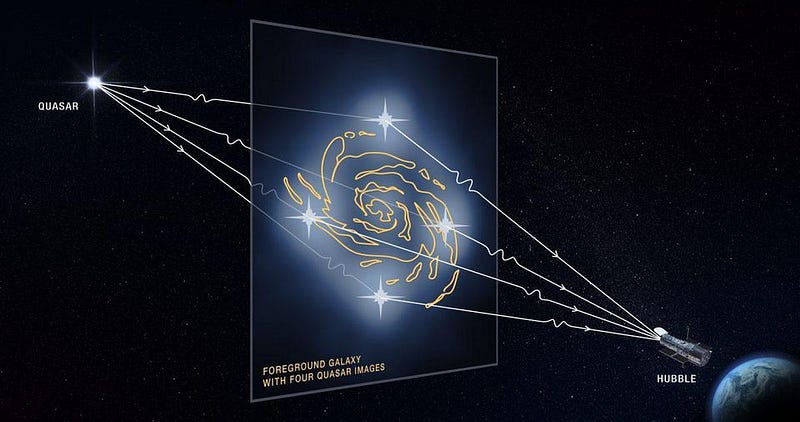
We have other means of measuring dark matter’s presence, too. The cosmic web wouldn’t have the shape or structure that it has with normal matter alone; adding in 85% dark matter and just 15% normal matter leads to an agreement between theoretical predictions and our observed Universe. The absorption features of gas clouds along the line-of-sight from quasars — known as the Lyman-alpha forest — agrees with cold dark matter scenarios only.
And, perhaps most spectacularly, we’ve observed more than a dozen galaxy groups and clusters in various stages of mergers. Wherever we do, we can identify where the normal matter is from the presence of light, X-ray, and radio emissions. But we can also reconstruct where the mass is from weak gravitational lensing. The fact that the majority of the mass doesn’t line up with where the normal matter is may be the most important clue we have that dark matter, and not just normal matter alone, is required to explain our Universe.
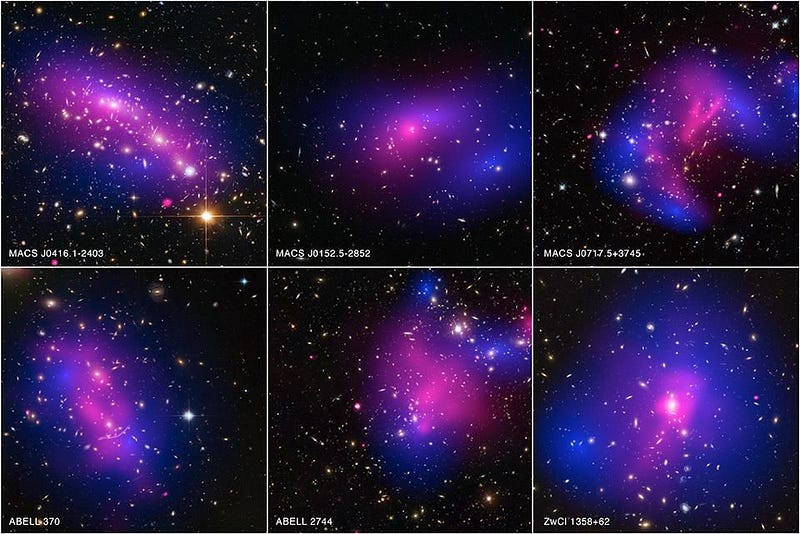
It’s an amazing detective story to finally acquire the observational evidence needed to identify where the normal matter in the Universe has been hiding, and a very clever result to get it from an unexpected and poorly-understood phenomenon: fast radio bursts. While some of the normal matter is in the form of stars, a little less than half of it is in the form of gas, while the remaining half is an ionized plasma residing in the space between the Universe’s galaxies. Everything else — dust, planets, stars, asteroids, etc. — is completely negligible.
But the overwhelming majority of the total matter in the Universe, the remaining 85%, is still missing. We call it dark matter; we know it can’t be made out of the stuff normal matter is made of; about 1% (or slightly less) of it is neutrinos; the remaining 99%+ is still unknown. That’s the great mystery of our time, and this new research doesn’t put a dent in it. Practically all of the Universe’s matter is still missing, and that’s a mystery still waiting to be solved.
Ethan Siegel is the author of Beyond the Galaxy and Treknology. You can pre-order his third book, currently in development: the Encyclopaedia Cosmologica.





